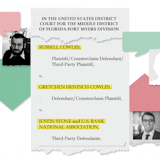Jieie Chen and Dong Xuan felt a strong connection to the University of Minnesota long before they arrived from China with their son, Ken, an incoming freshman.
They had spent hours online researching the university. They had heard the director of the U’s Beijing office make a case for joining the “Gophers family” at a meeting with admitted students in Shanghai last spring. They had later taken in testimonials from U students and alumni at one of the orientations the university hosts in China each summer.
In Minneapolis, the family joined some 50 fellow Chinese parents for a campus tour in Mandarin and a welcome session that included gifts of maroon-and-gold T-shirts with Mandarin lettering.
“Your children are central to education at the University of Minnesota,” assistant dean Barbara Kappler told the parents.
Ken Xuan is one of 3,000-plus Chinese students enrolled at the U — more than triple the number from 15 years ago. Chinese students now make up 45% of all international students on the university’s campuses. Their tuition payments over the past decade total nearly half a billion dollars, according to data the Star Tribune obtained through public records requests. That windfall helped the U weather the Great Recession of 2007-09 and avoid higher tuition increases for Minnesota students.
But the U’s success recruiting students from China is facing fresh threats.
A trade war between the U.S. and China, fears about anti-immigrant sentiment and a push by China to invest more heavily in its own universities mean fewer Chinese students are studying in the United States.
The U’s Twin Cities campus has held the line on enrollment, but Chinese student numbers are down across its campuses in greater Minnesota. Meanwhile, applications systemwide are down about 6% from five years ago, while graduate applications have fallen a more worrying 20% during the same period.


